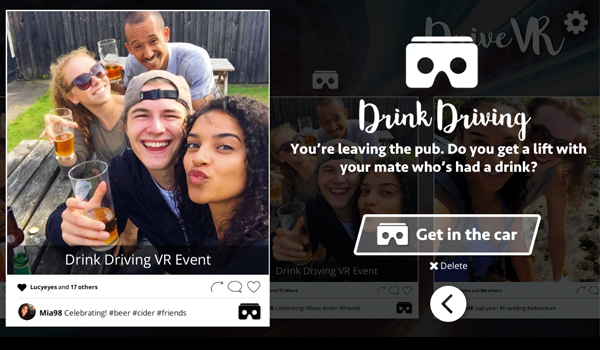Pioneering app delivers virtual safety message
A pioneering virtual reality (VR) app that puts users in the driving seat is being used to promote road safety.
A pioneering virtual reality (VR) app that puts users in the driving seat is being used to promote road safety. Developers says that by immersing users, and literally putting them in the driving seat, DriveVR shows how split-second decisions can have long and short-term effects for drivers, passengers and pedestrians. The app has been launched by West Mercias Safer Roads Partnership. It was created with input from cadets at West Mercia Police and is aimed at users of a similar age group. It will be delivered to around 5,000 young people each year as part of the Green Light road safety programme and focuses on common causes of road traffic collisions, including speeding, mobile phones, drink-driving, drug-driving, passenger distractions, seatbelts, rural roads and pedestrian safety. DriveVR presents users with real-life driving situations, enabling them to see the outcomes of bad driving decisions to encourage them not to make the same mistakes in a real car. West Mercia police and crime commissioner (PCC) John Campion said too many people are killed or seriously injured on the roads in collisions that could have been prevented. Education is vitally important to ensure everyone understands the impact of making a decision that puts road users at risk, he explained. I am keen to ensure that resources continue to be in place to change peoples perceptions and behaviours in order to prevent collisions on our roads. DriveVR is an excellent example of a forward-thinking approach. I hope it will continue to be a success, helping to making our roads safer. Anna Higgins, communications manager at the Safer Roads Partnership, added: Were really pleased to launch DriveVR and promote road safety messages to young people in a much different and much more innovative way than we ever have before. She said DriveVR has already been downloaded around 2,000 times. The app works with Google Cardboard VR compatible headsets. Videos can also be viewed in 360-degrees without a headset.


